Your cart is currently empty!
Beyond Red: The Chinese Palette–Sensual White定窑

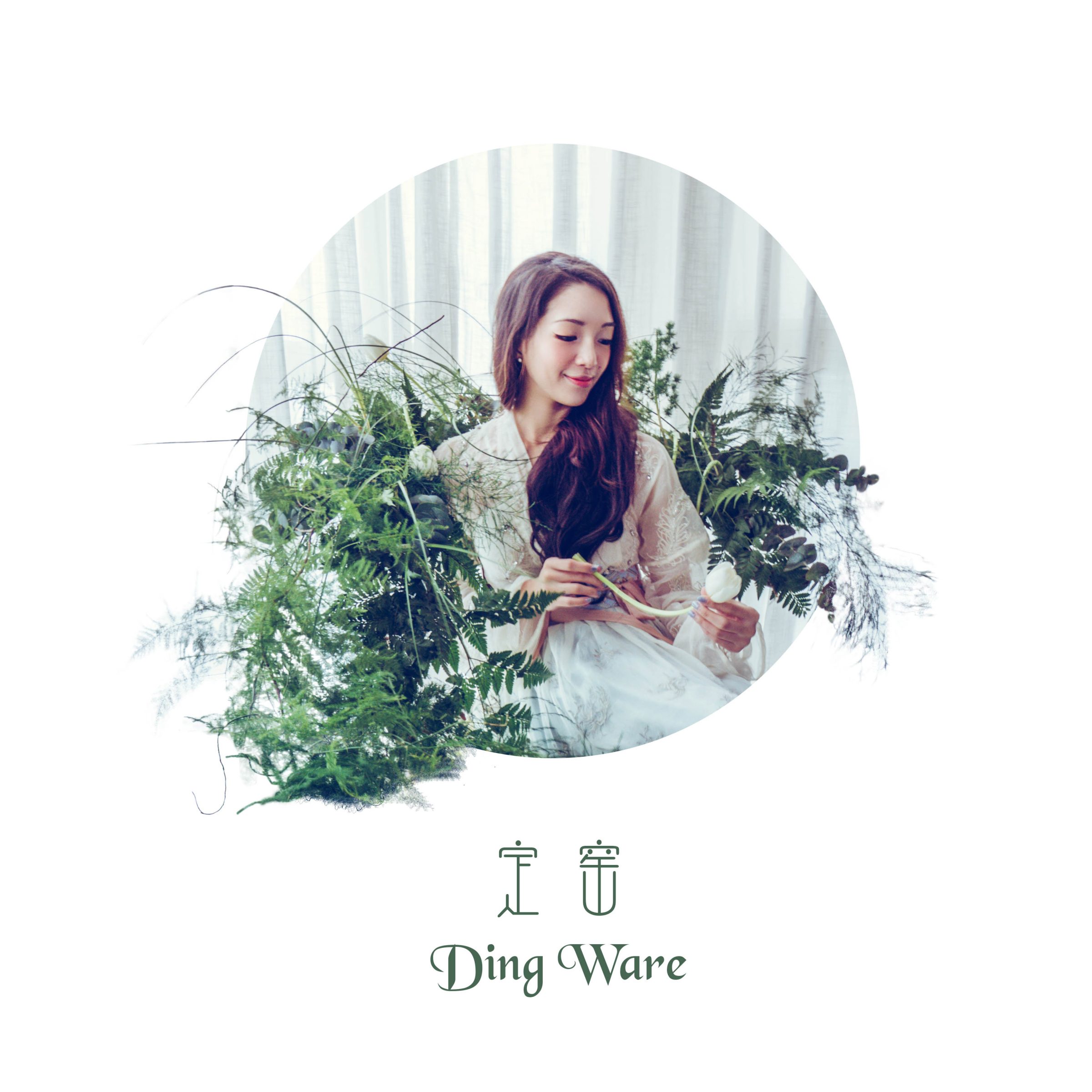
White colour is most likely to be voted the most unlikely colour for Chinese wedding with Black being the only other contender for top spot. However, it might surprise you to know that both Black and White have been used for weddings in various points in Chinese history. I’ll talk about black another time, but now, let’s focus on White and its symbolism and cultural importance in the Chinese culture.
The Song Dynasty’s Ding porcelain ware was known for its white colour range which in turn was supposed to represent the white jade (nephrite) of ancient Chinese traditions. There were of course other glaze colours but white was by far the most valuable and highly sought after one by collectors then and now.
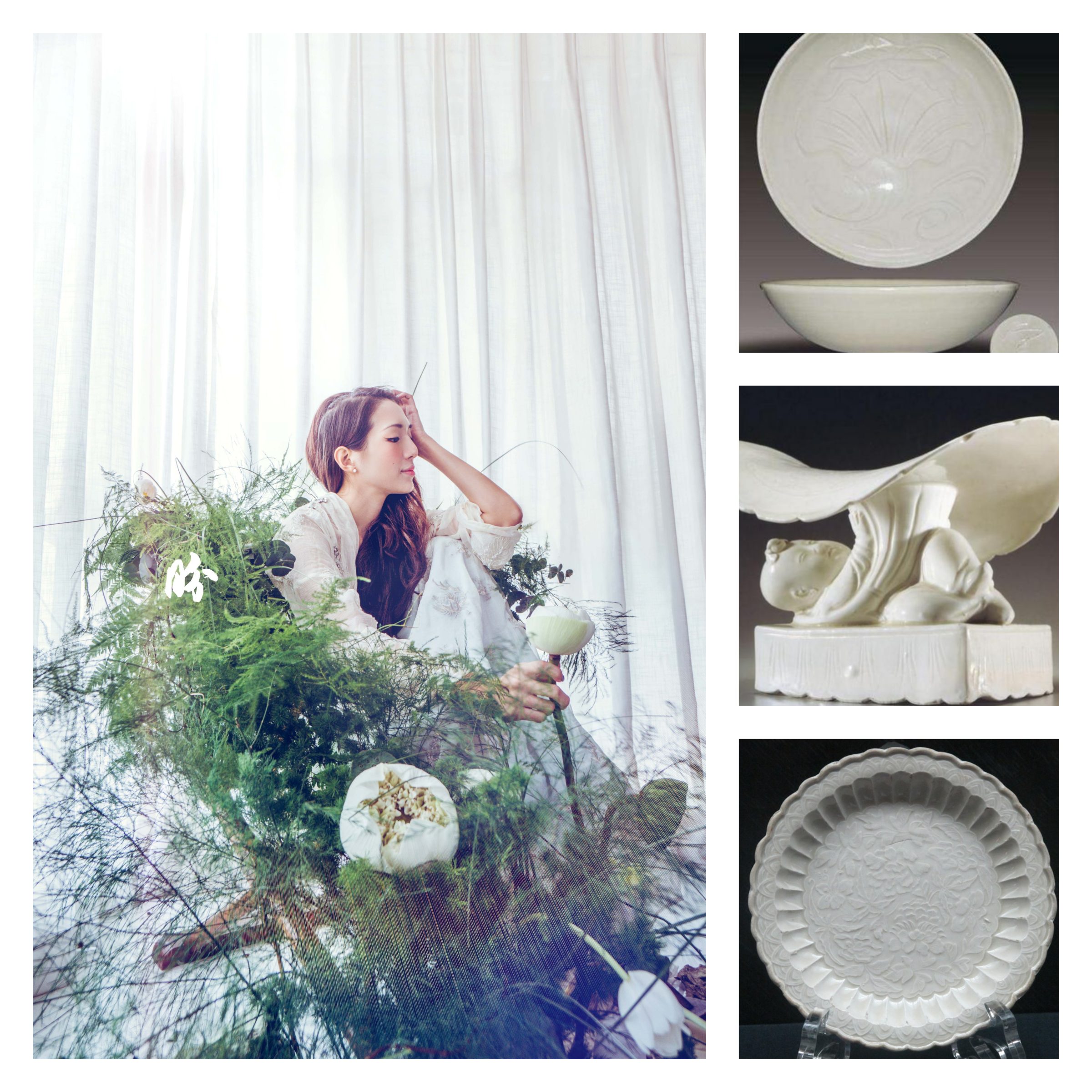
Although a colour that none would associate with the Chinese wedding today, white was not always seen as inauspicious. It depends on the context of use, and in fact, the practice of wearing white for a wedding in China also took place some 1,800 years ago! There were a few hundred years in Chinese history where white was sought after by rulers and commoners alike and was prized as one of the more desirable colours to wear for weddings!
History of White in Chinese culture
As early as over 2000 years ago in China, there was a strong belief in the 5 elements–Fire, Metal, Earth, Wood, Water.
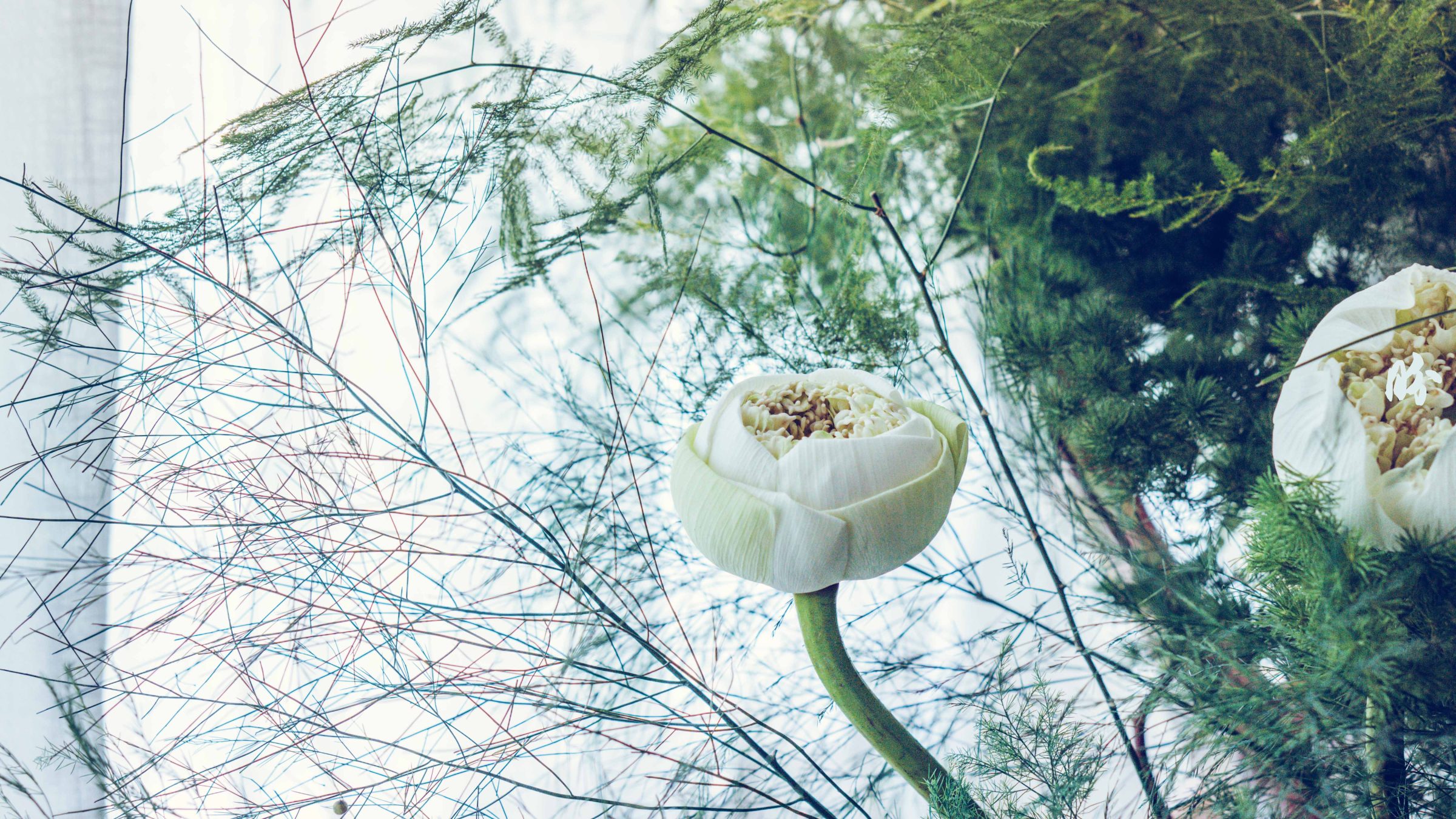
They each represented a direction (North, South, East, West, Centre), a colour (Red, White, Blue/Green, Black, Yellow) and many many other things like your internal organs and health, medicine, seasons etc.
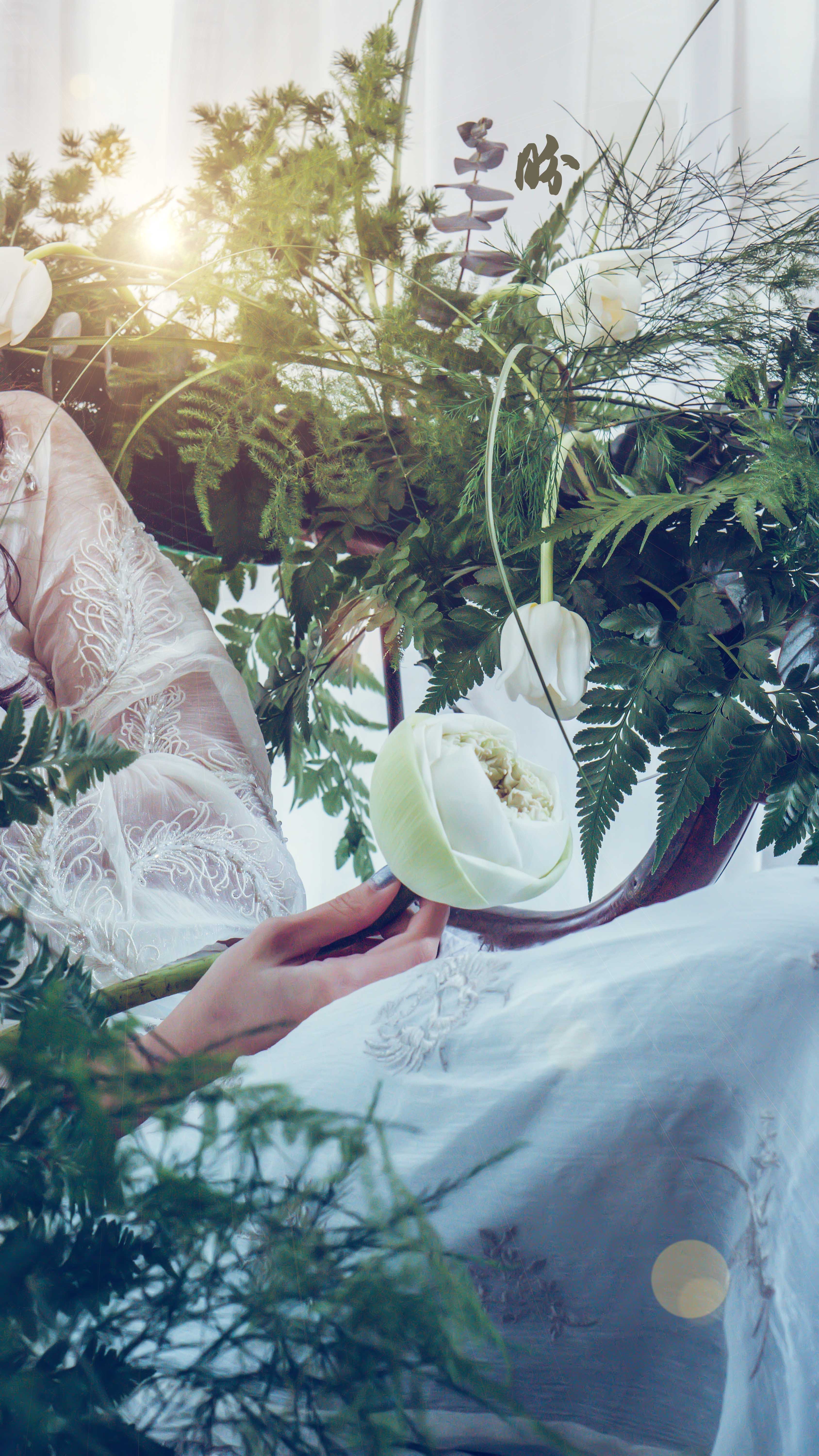
So long story short–the 5 elements were seen as governing your entire system of living, the ecosystem, the rule of life.
White, corresponds to the Metal element. But for thousands of years before that, it has been seen as a plain colour/style for dressing and which was used for funerals. So it is true that it has always been associated with the inauspicious and the dead.
However, there was a (relatively) short period after the Han Dynasty in the 3rd century or so, where the traditional symbolic meaning of White was disregarded in daily wear, and transformed into a fashionable colour all because a powerful and influential ruler liked it.
The ruler is none other than the famous warlord Cao Cao 曹操 of the 3 kingdoms, who was also known for his chronic spitting headaches, and for killing a famous Chinese physician Hua Tuo for suggesting skull operations (but that’s another story for another day). So basically he felt much better after wearing a white scarf on his head when having the headache (placebo effect alert on high!), and then it kickstarted the trend of people wearing white headscarves, and even white for weddings!


In fact, there is also a record mention in a Qing dynasty book in the 17th century 陇蜀余闻 compiled by a scholar about the sightings and customs of the Sichuan region. In it, he mentioned that the Sichuan/Shaanxi border place, white was a highly prestigious and popular colour and that men and women would wrap their head with white scarves. In another neighbouring area, the people would wear white dresses/costumes for their new year and auspicious occasions. These people were regarded as the “original” descendants of Han people and culture. It was believed that they wore white in memory of Zhuge Liang (a miliary strategist during the 3 kingdoms in the 3rd century), and that tradition continued and evolved to become auspicious wear.
But more than just a colour, the white dresses iconic in many paintings from that era also represented the spirit of the time. It was a period where the overbearing Confucianism of the period era was breaking apart, and people opted for a more free-spirited look–which was white! Along with it, people also started wearing slippers to official events to express their rebellion against Confucianism.
It was the start of the pursuit of minimalism as an influence from Taoism and Neo-Taoism school of thought. The emphasis is on nothingness, beauty in nature and a pursuit for the simple and true form of things (以无为本,返璞归真)–something that made a comeback in the Song dynasty some 1000 years later around the 10-12th century.
The White porcelain glaze of the Ding kiln (定窑) during the Song dynasty

Song dynasty is known for its Minimalist taste, and this would then go on to influence the Japanese minimalist which we are so familiar with today. And the Ding wares were considered one of the top porcelain wares produced during that period, in accordance with the Song taste.
The kiln which fired this type of porcelain ware started production of such in the period before during the late Tang dynasty (circa 9th century), but reached its peak during the Song dynasty(10-12th century). And what started out as a civilian’s kiln before was elevated to the status of an imperial kiln later on where only the imperial family had access to. With the passage of time, it evolved to producing other coloured wares such as black, purple and green Ding wares, but none was as famous as the white ones. Kinda like how every brand has a signature design, though they also produce other designs, the best seller is always its signature (and also the highest pricing one).

Its aesthetics was said to be smooth, thinly and lightly applied, and opaque with a slight tinge of yellow, like the top quality white Jade adored by the Chinese. Yes, opaque nephrite (AKA soft jade软玉 AKA real jade真玉), not gemstone-like translucent/crystal clear jadeite (AKA hard jade硬玉), were seen as extremely valuable and desirable by the Chinese for its lustre, and how it probably reminded one of the femininity, and soft and tender skin of a woman (my own theory).
The porcelain pillow below is a fine example of the Ding ware collection of the Beijing Palace Museum. History of porcelain pillows goes all the way back to the Sui dynasty (7th century), was popularised during the Tang dynasty after, and reached its peak in the Song dynasty all the way into the Mongolian rule in the 12th century or so. What started as being purely functional took on a more aesthetic and artistic identity and all kinds of animals and motifs were incorporated into its making. Eventually, it faced its decline in the Ming and Qing dynasty (from 13th century onwards) due to the availability of softer and better material for the pillow.
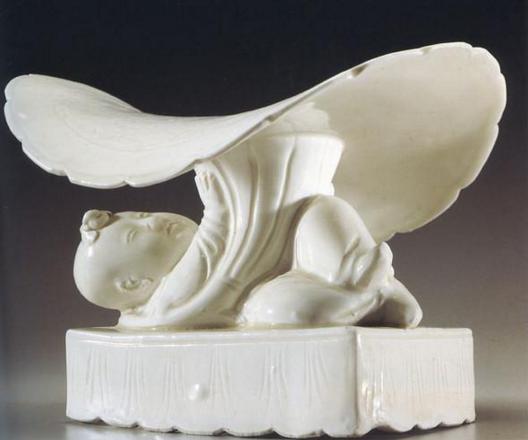
I remember someone lamenting right next to me in a museum when standing in front of a porcelain pillow, about how uncomfortable that must’ve felt. However, I think that it is very much a question of preference and shifting taste. For one, I feel that the traditional Chinese has a huge preference for harder materials (wooden sofas, beds etc.) and my parents always complain about mine being too soft and lack the form and support they require. Also, they said it’s much cooling that way. Likewise for porcelain pillow I guess!
There’s a quick and interesting article from Christie’s on this!
There are jades, and there is Jade

Just like how the Eskimos have 100 over words for snow (that’s a myth btw), and how the Japanese are familiar with hundreds of fish names (that’s true), the Chinese have many types of stones which they call jade. There are serpentine jade, jadeite jade, nephrite jade, jasper jade etc. So basically Chinese like to call pretty stones of similar colour and texture jade. And naturally, certain jades are more authentically and traditionally Chinese than others. It might surprise you to know that Jadeite jade (翡翠feicui) is not one of the ancient-traditional ones despite its pervasiveness in the world and in Chinese culture today.
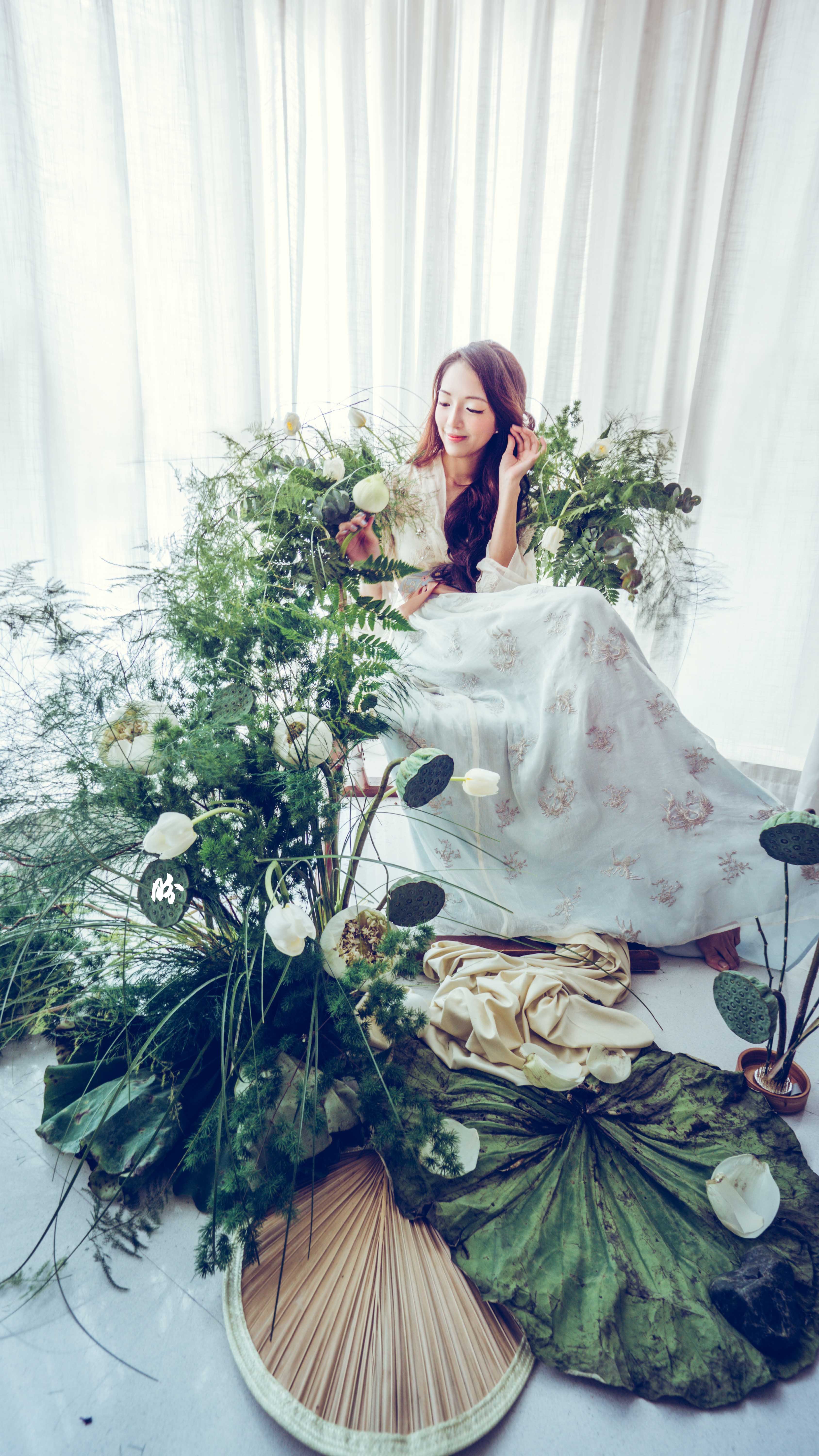
One thing that set ancient Chinese aesthetics apart from the West (besides porcelains) and our general taste today is their preference for more muted and understated pieces of jade. Nephrite jade has been highly regarded in Chinese culture for over 5,000 years, whereas Jadeite Jade, which the rest of the world is more familiar with, only has a history of about 500 years in Chinese culture as it was originally from Myanmar. When Jadeite was first introduced to China during the Ming dynasty, it wasn’t popular nor expensive, and it was only about the last century or so that its price skyrocketed (possibly because of the shifting aesthetics towards more gem-like translucent stones).

And the most prized type of white nephrite jade is what is known as the “mutton fat jade” (I would like to translate it as Lanolin jade) 羊脂玉 from Xinjiang region (Western China). The empress’s seal from Western Han dynasty over 2,000 years ago was found to be made of this type of nephrite. To the Chinese, white (slightly yellow tinge), opaque jade that looks like a smooth and rich crystalised fats represented the righteousness and purity of values they so look up to.
The English translated name definitely sounds quite gross (thus my own proposed name Lanolin), since the Chinese term for fats/cream–Zhi脂, has an extra quality of delicateness often associated with women. The smooth and fullness of the jade are described as 润Run (lustre is the closest word), and together with the concept of this full, white Zhi/fat/cream, they create an idealised image of a beautiful woman with her soft, tender skin/bosom. There’s even a Chinese saying that someone (a woman’s) skin is like frozen Zhi /fats/cream (some things are just better in its original language and pronunciation 肤如凝脂). Think of it as being closer to tofu, than uh, fats.
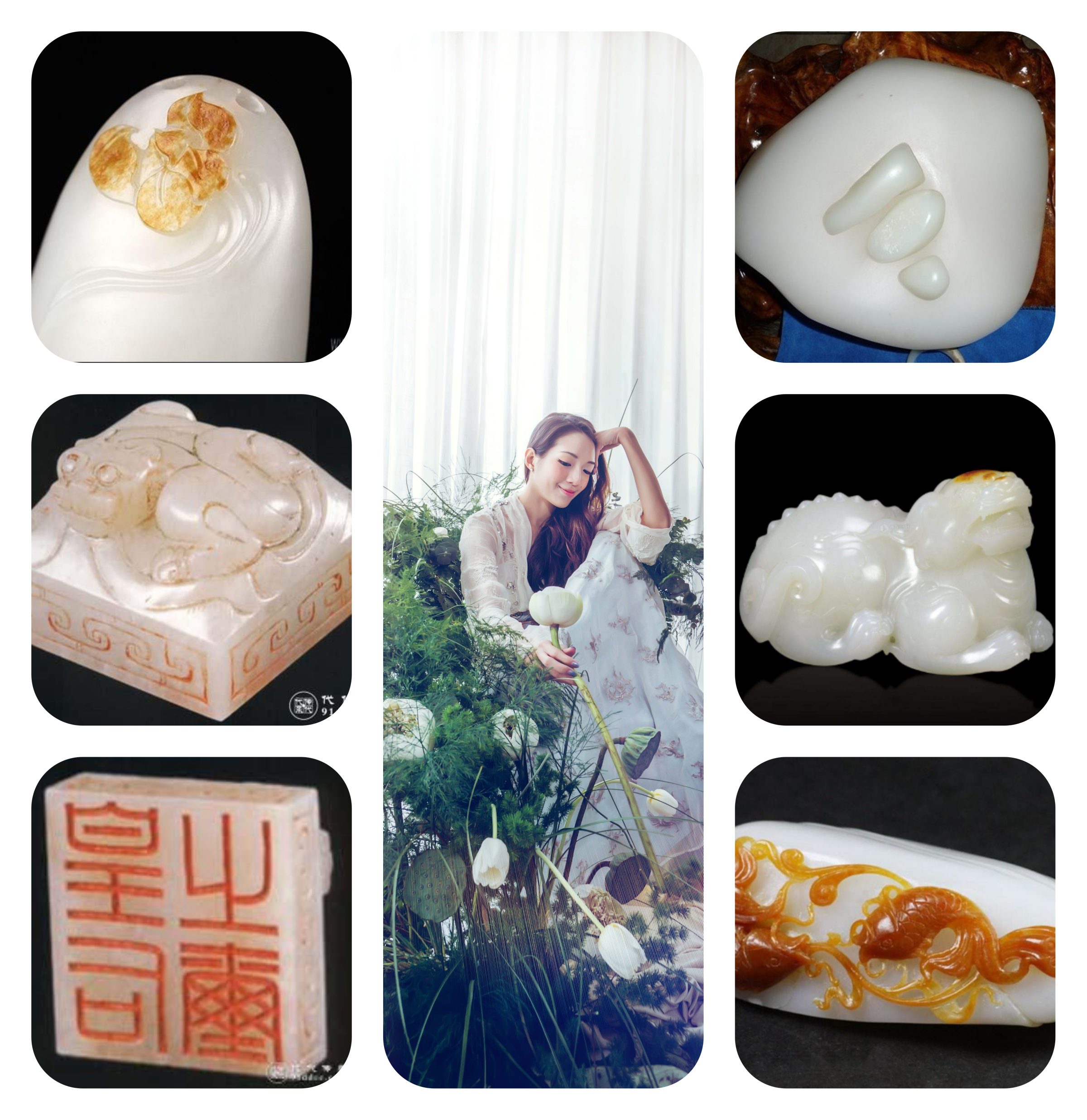
My husband said I might be overthinking this, but as an ex-Lit student, reading into words and picking out nuances is what I love doing!
Flower & Plant Pairing
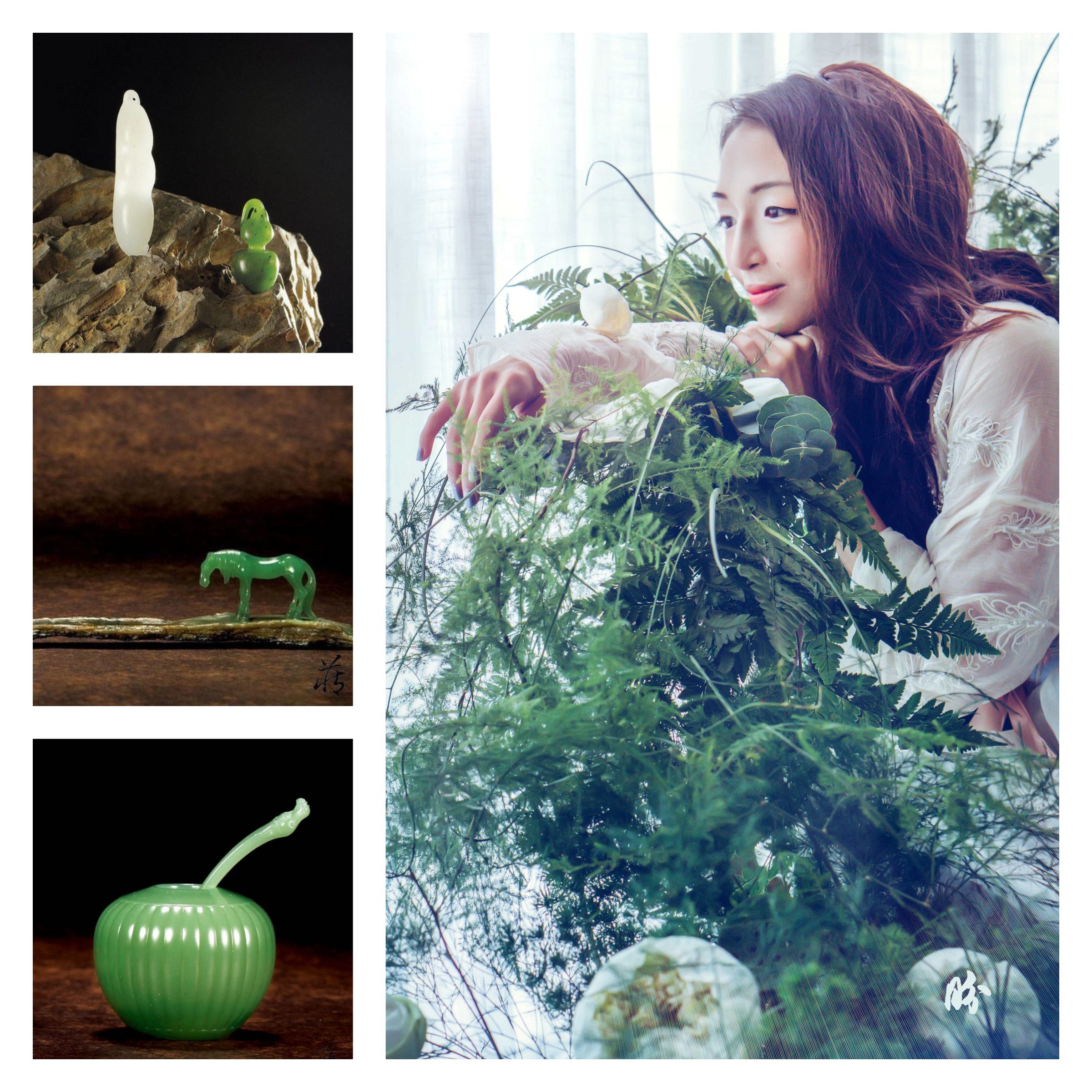
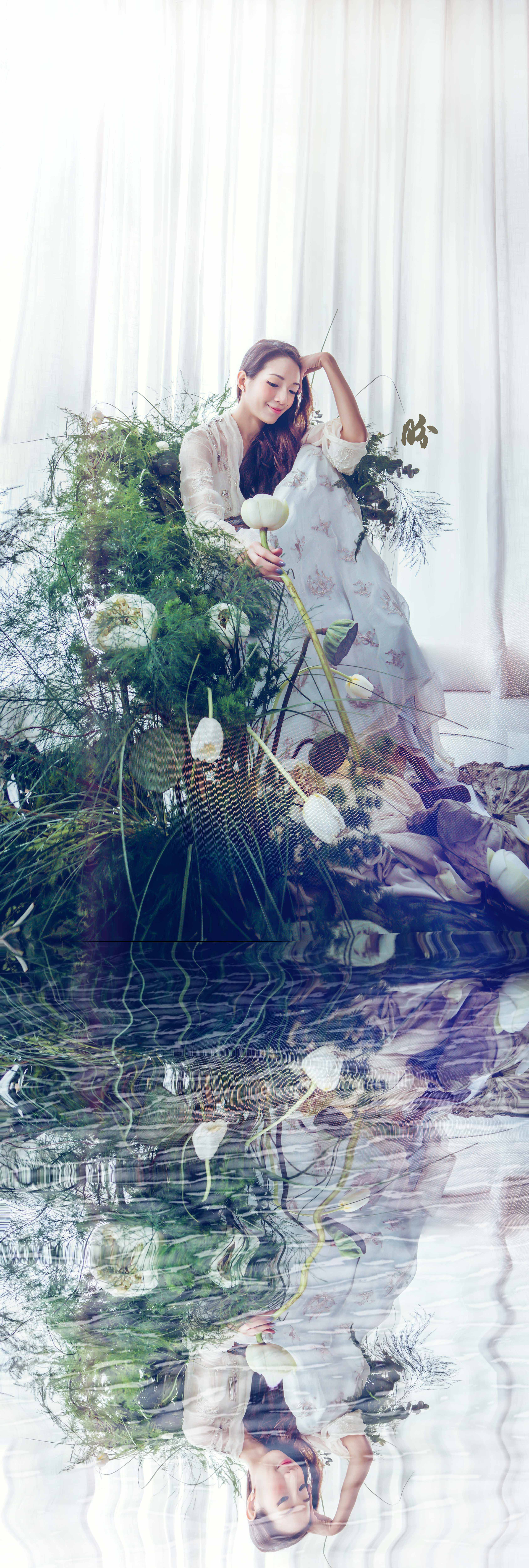
When I collaborated with Blanc Studios for the shoot, I briefly explained to them the Ding kiln aesthetics through images, and while I work on the model styling, they worked on the floral and composition stylings.
Jonathan’s design is inspired by serenity and the surface of water. So we got in the lotus, and had the chair decorated as if it’s a leaf-boat that’s floating on the surface of water. The model, then has this Thumbelina feel, like a lotus that’s resting atop the leaf.
Beyond its religious association with Buddhism, culturally, the lotus was seen as a symbol of purity in China. There is a Chinese phrase that is used to describe the beauty and purity of the flower–出污泥而不染,濯清涟而不妖。
Surprise, surprise, this phrase actually came from a Song dynasty writer!
Here’s a poetic translation of the relevant passage:
“[M]ore worldly people have adored the peony ever since the Tang dynasty. But my special love is for the lotus which grows out of the mud but remains unsoiled, is cleansed by pure rippling water and which, for all its beauty, remains free from seductive guile.”
-Translated by Mark Friggiths
I really like the combination of green and white even though green was not part of the original palette for Ding wares. It adds to the entire feeling of being at one with nature, and that lotus with its lotus leaves just floating atop water, drifting down the river.
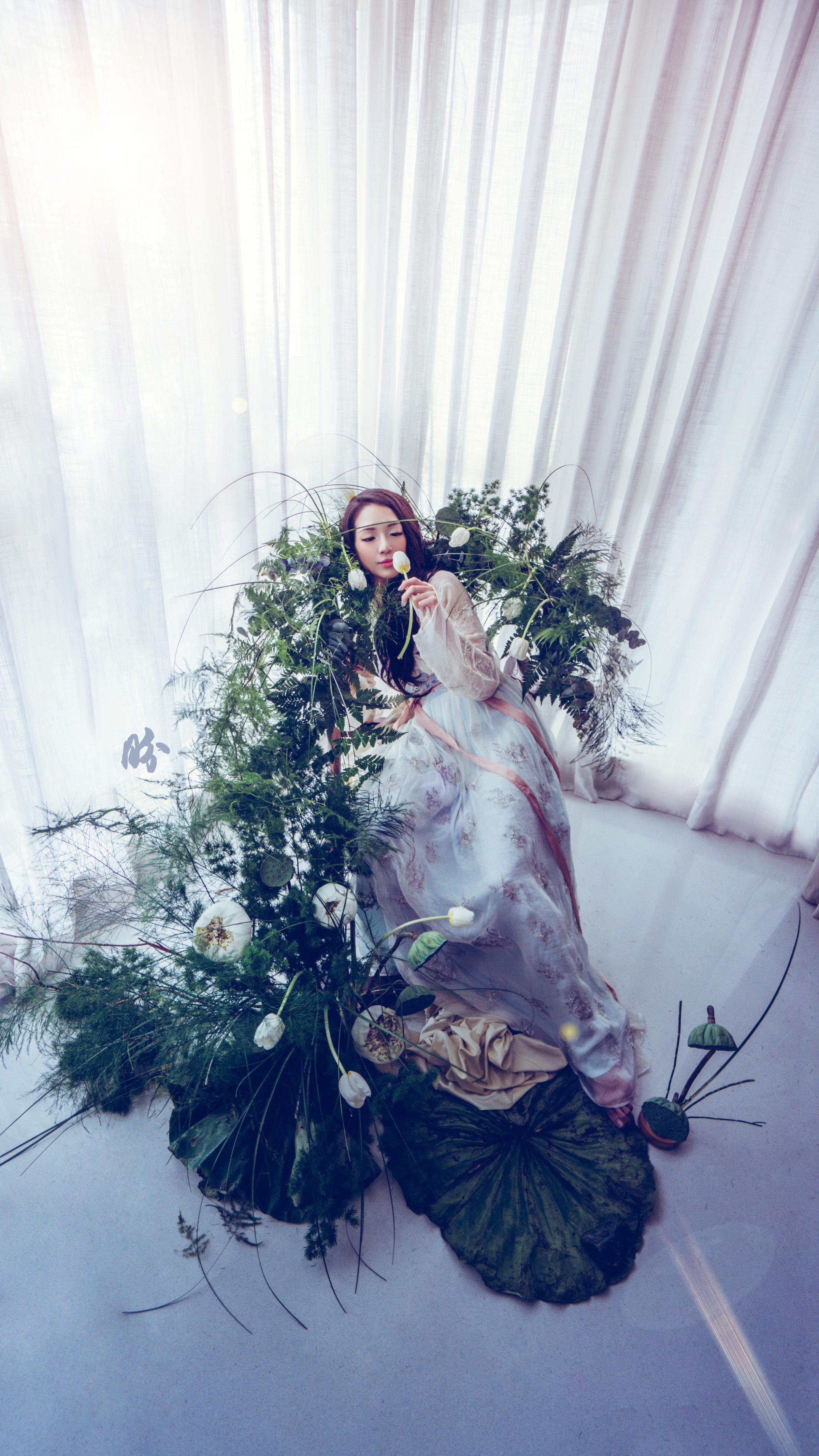
The white lotus (yes it’s lotus, not peony!) and tulips worked really nicely in bringing out Elizabeth (the model)’s gentleness.
You probably wouldn’t realise, but she was seated on a Song dynasty style armchair! Chairs weren’t really popular in China until this period actually! In the past, people used to kneel on the floor just like how the Japanese are still continuing with this tradition. Then the Chinese started using stools, and chairs, and then in Song dynasty, there was this foldable armchair being invented and even then, that’s really meant for men or really important people of the household. Women just stand around or sit on stools generally. Yes, gender politics of the furniture!
So I’m really quite happy that Jon (Blanc Studios) actually turned the chair into a beautiful frame and support for a woman, kind of subverting its original history.
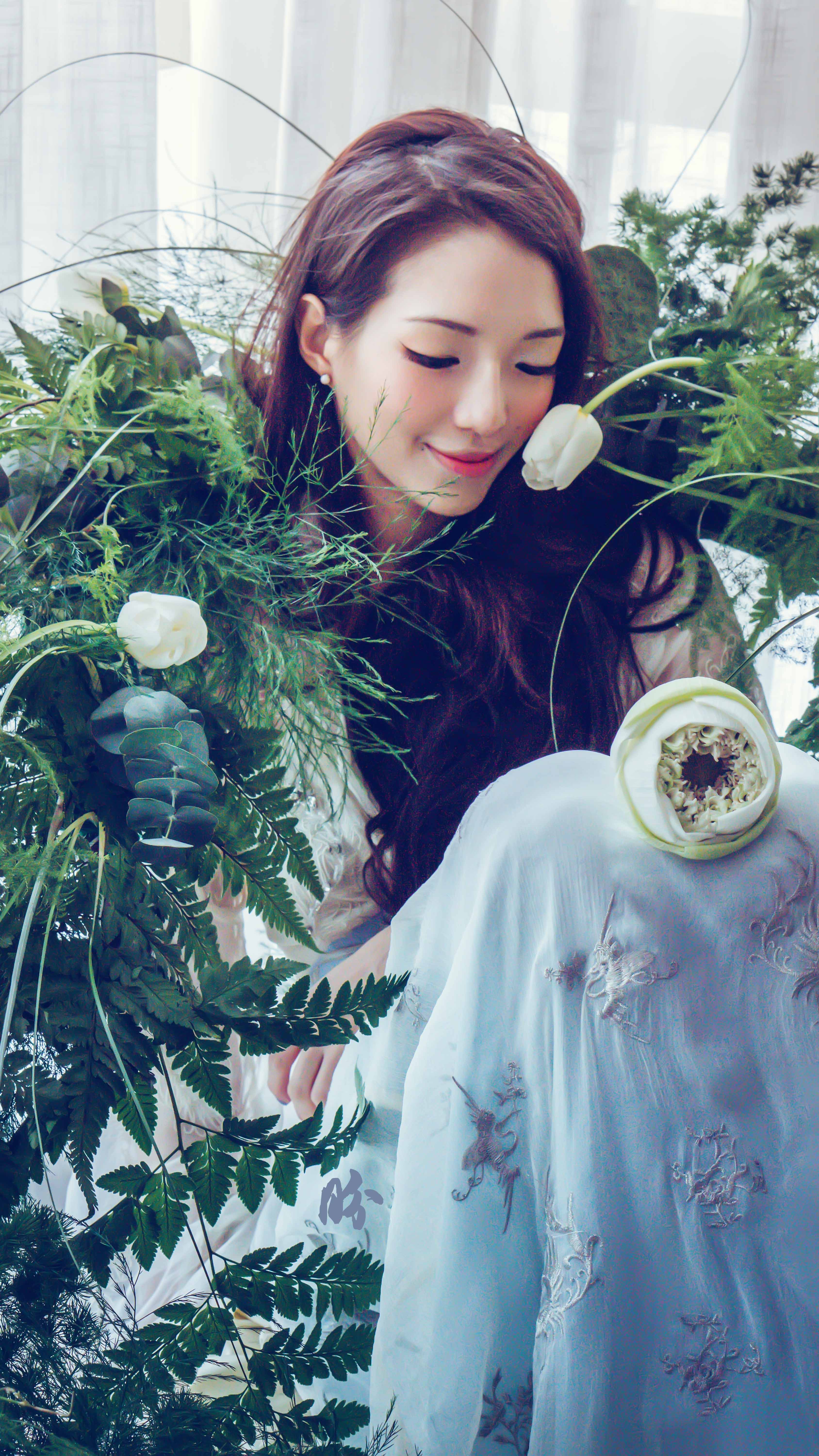
Tea Pairing
Just to complete this entire shoot with a bit of tea, I have also invited Kenny, a Tea sommelier, to recommend the type of tea that would complement the light and gentleness of the Ding wares.
Bai Mu Dan (white peony)
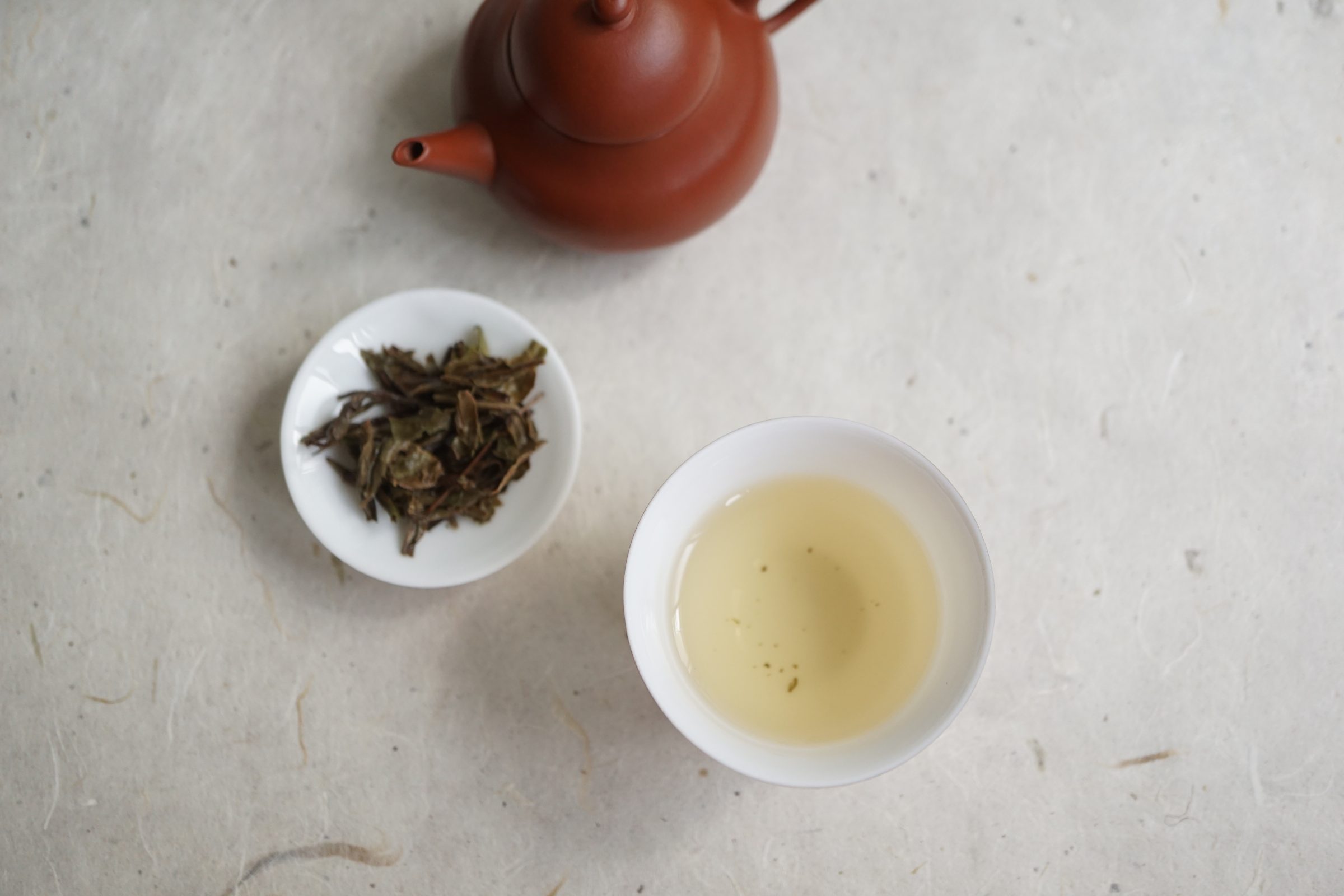
Connoting light and translucency with the gentleness of white jade, wares of the Ding kiln make us reach out for a glass of white tea such as this wild-grown Bai Mu Dan. The light pale colour of the tea and its soft gentle aromas and flavours evoke a sense of calming brightness and warmth, coupled with a deep and comforting expression of purity and elegance.
Credits/Acknowledgement:
Flowers and styling by @blancstudios.co
Model styling and photography by @hanfugirl
Tea recommendation by Kenny from Teatle-Tattle

Leave a Reply